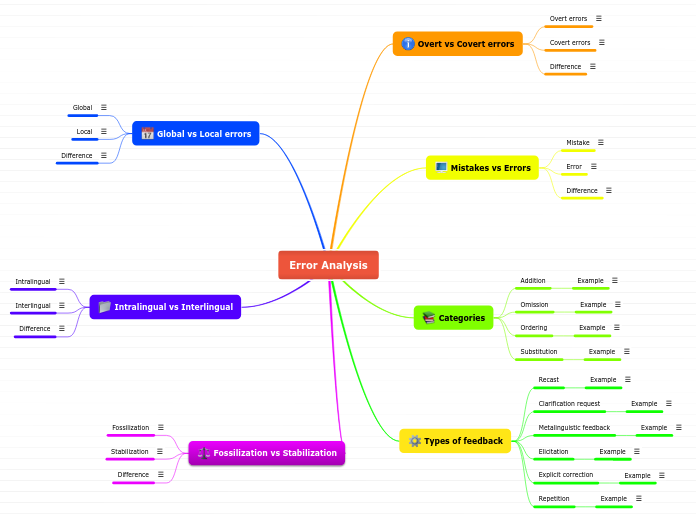E-LEARNING
THE FUTURE OF E-LEARNING
E-learning tools in the future
These will be
The distant future:
Automatic learning
Personalized Learning
Tailoring of pedagogy, curriculum and learning environments to meet the needs and aspirations of individual learners.
Gamification
Use of game thinking and game mechanics.
Micro-learning
Design of microlearning activities
through micro steps.
These activities can be incorporated into a learner's daily routines.
e-learning will be more viable and affordable
Social media are also transforming
education constantly.
Internet connection speeds
are increasing.
E-LEARNING IN EDUCATION VS. CORPORATE SECTOR
Learn anywhere and at any time
Convergence
Corporate e-learning professionals can learn from academic e-learning initiatives and vice versa.
Educational institutes
Learn things with global scope.
knowledge transfer and not training.
Corporate environment
Knowledge transfer.
E-learning can be translated to lower costs to deliver training.
Involving learners as participants.
Specific knowledge and skills.
Characteristics of corporate learning
Return on investment.
Training vs. Education.
Benefits organization.
Career-related.
Fast-paced.
LEARNING VS TRAINING
The characteristics of training
Good use of resources.
Tools to tackle current issues, develop life-long skills.
New employee learns to perform day-to-day functions.
Development of new skills or skill sets that will be used.
The characteristics of learning
Equipment for unexpected and unspecific situations.
Future challenges.
Learn something specific.
Increasing skills and abilities to achieve goals.
Absorb and retain information.
Content authoring tool
It includes HTML, Flash, and various types of e-learning authoring tools.”
Create multimedia.
It is a software package.
Types of learning
management systems
SaaS (Software as a Service)
It may be more cost effective in the long run.
It will have a higher initial cost as you will have to pay for the software and installation.
The system is running on someone else's
server.
Requires more maintenance and support.
Commercial LMS
Good documentation, product and support. Besides being more free and stable.
Synchronous e-learning vs asynchronous e-learning
Both
strategies have their own pros and cons
Divided into
Asynchronous
Lack of motivation.
Perfect option for users who enjoy taking
their time with each lesson plan.
Communications delivered via web,
email and messages posted on community forums.
Can be carried out even when the student or teacher is offline.
Synchronous
It has a specific time slot in order to attend a teaching session.
It enables students to avoid feelings of isolation.
Any learning tool that is in real-time.
Chat and
videoconferencing.
LEARNING PLATFORMS
LMS
Features
Help with content creation
Templates to attract students.
Solid test environments.
Being user-friendly.
Reports
Reports in excel that allow graphical representation of data.
Course pathways
Flexible work flow to set students on certain ‘learning pathways’.
Communication
A LMS may provide you with a chat room or a forum that you and your students can use.
Social Networking
Share your content or news items via Twitter or Facebook etc.
Virtual Classroom
Whiteboard systems for virtual classroom sessions and help you to schedule sessions too.
Enrollment
Online registration and payment through credit card or PayPal.
Customization
Language options, notification settings and other important features can be changed.
Easy GUI
The environment more aesthetically pleasing.
Definition
LMS hook up to a database such as PostgreSQL, MySQL or SQL Server.
LMS are built on various platformsnly PHP, .Net or Java.
LMS is the backbone of e-learning.
LMS allows to manage different aspects of a course.
Collaboration between student and teacher.
Computer system specifically developed to administer online courses.
Tests and quizzes a vital part of e-learning
Suprovide an array of benefits for both the learner and the instructorbtopic.
Keeps learners engaged.
Subtopic
It allows them to know what they did wrong immediately.
It is also environmentally friendly!
Allows instructor to see trends and act upon them to improve the curriculum.
Less work to be done.
Instant grading and feedback.
Randomizing question and answer order to makestudents memorize the correct option.
It also makes testing a hassle-free task as corrections are automated with a LMS.
Elements of Online Courses
A number of criteria must be met to ensure that students receive the benefits.
Online tests and quizzes
The instructor is able to track the progress of students and assess the effectiveness of the curriculum.
Tests and quizzes are still an essential part of the educational process.
Tested delivery methods
Serves as a model of excellence for the e-learning industry.
Compatibility is always a delicate matter.
Content that is up to par.
System must be well designed and efficient.
Most important thing to keep a student satisfied is the material.
A streamlined and well-designed LMS
Everyday tasks include the distribution of new material and sending, receiving and grading assignments.
Easy to navigate, is well-organized and contains high quality material.
Consistent instructor presence
Be tracked and given proper feedback which is very important throughout the learning process.
Encourage, inspire and ensure students don’t feel like they have embarked.
Open source LMS
Solid community foundation online with forums or email lists for user support.
Can grow quickly if they have enough interest and input.
SCORM & TinCan
TInCan
We should expect more from it in the future
It includes simplicity and extra security measures
Lifts many restrictions of older specifications.
TinCan is an open source API
SCORM
SCORM is widely adopted by huge organizations
Content can be created one time and used in many different systems
Allow a certain resource to be viewed and function properly
Shareable Content Object Reference Model









